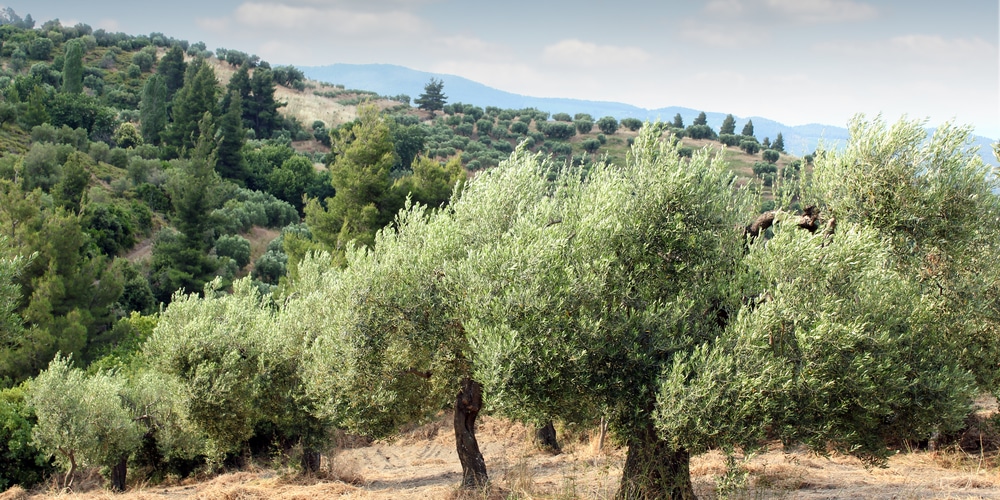When thinking about olive trees, you probably picture a Mediterranean garden. We know that most olives come from Spain, Italy, and Greece, so we don’t even think about planting them in our garden. Most of us believe olive trees are species suitable for the hot regions of Southern California, not for the mild temperatures of hardiness zones 7 and 7b. And while there might be some truth to that, the good news is that you can plant olive trees even in such regions (and with excellent results).
USDA hardiness zones 7 and 7b include the colder regions of California, Nevada, Arizona, Arkansas, Virginia, Tennesse, and New Jersey. And if you live in any of these states, you don’t have to worry anymore about finding olive trees that will withstand colder winters. In this “Cold hardy olive trees zone 7 and 7b” essential guide, you’ll learn about the types of olive trees that will thrive in these regions.
Can Olive Trees Grow in Zones 7 and 7B?

While typical olive trees don’t withstand temperatures below 17F, you can find species that survive even cold spells. We recommend you follow our tips to improve the temperature conditions for your olive tree to thrive. For starters, you should consider planting your trees up against the wall to get more heat from the reflection. Doing so will also protect your plant from colder temperatures at night.
Luckily, if your garden faces west or south, you won’t have much to worry about keeping your tree warm. Alternatively, think about placing your tree in a container. Doing so will allow you to care for it during the coldest months.
Cold Hardy Olive Trees in Zone 7
Here are the best varieties of olive trees to grow in zones 7 and 7b.
Mission Olive Tree
Mission Olive tree is the best species to grow in hardiness zones 7 and 7b. It has the best cold resistance and performs well throughout the hardiness region. Plant it under the full sun (it should receive at least 6 to 8 hours of direct light per day) and keep the soil moist, especially during the summer. If you don’t have much time to care for your tree, don’t worry: it only requires minimal pruning for shaping and healthier production.
Arbequina Olive Tree
Arbequina olive tree produces small and juicy fruits that are perfect for oil-making. This species produces olives in as little as two years and can survive winters even below 15F. They also have high tolerances to drought conditions, so you don’t have to worry about dry summer months. However, you must plant your arbequina in a container to ensure it will survive zone 7 and 7b’s winter temperatures.
If the temperatures seem to get lower than 10F, consider moving your tree inside. Don’t forget to plant it somewhere it can receive full sunlight, either direct or indirect. Arbequina can also survive under partial shade but will produce less crop yield. Fertilize the plant twice per year with a nitrogen-rich product to get even better results.
Manzanillo Olive Tree
Another cold-hardy tree is the manzanillo variety. This species is one of the most important in Spain and produces excellent quality fruits that make delicious oil and snacks.
Trees can reach up to 25 feet in height and require full sun. If you decide to grow your plant in a container, don’t forget to water it frequently to increase moisture and improve nutrient absorption. This tree does well in various soil conditions, including sandy and clay. However, it performs better on well-draining grounds that are fertile.
Picual Olive Tree
Another Spanish olive tree that does well in hardiness zones between 7 and 7b is Picual. The tree is known for its high yields and moderate cold tolerance. Plus, it matures earlier than other varieties, making it a favorite for commercial production.
For its dense foliage, the Picual tree is also a good choice if you are trying to improve the aesthetics of your garden. Also, it does well in poor soils and adapts to hot and rocky locations.
Cold Hardy Olive Trees in Zone 7: The Bottom Line
As you can see, there are plenty of varieties to choose from if you want to grow olives in zones 7 and 7b. You may have to give them more protection to low temperatures and think carefully about their location, but you will still get excellent results if you take good care of your plants.
